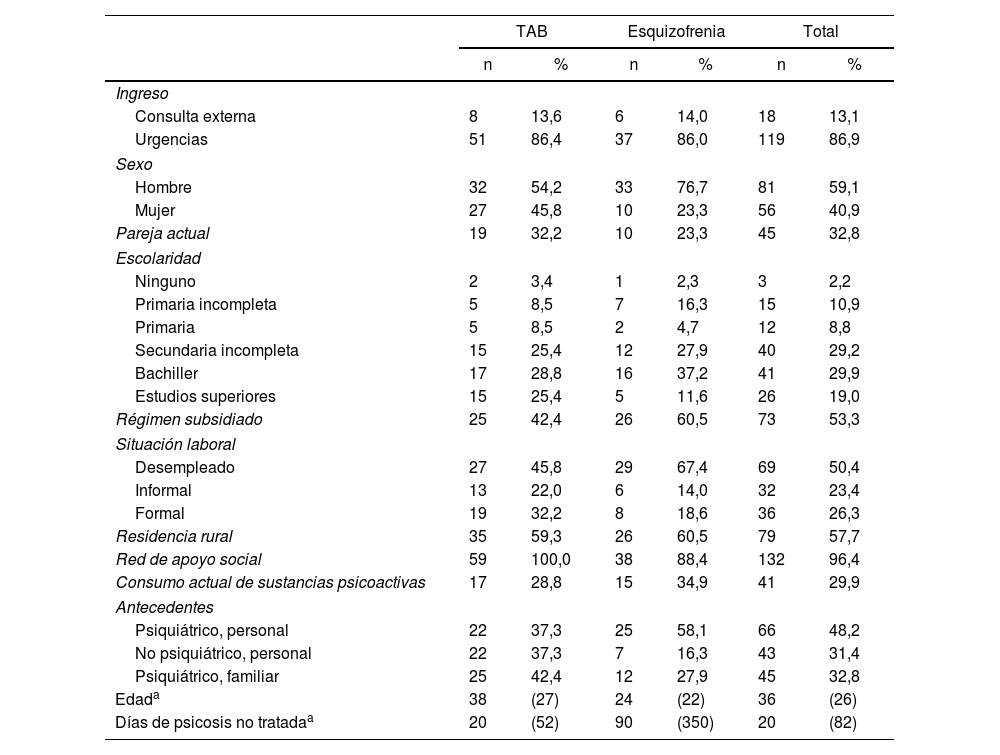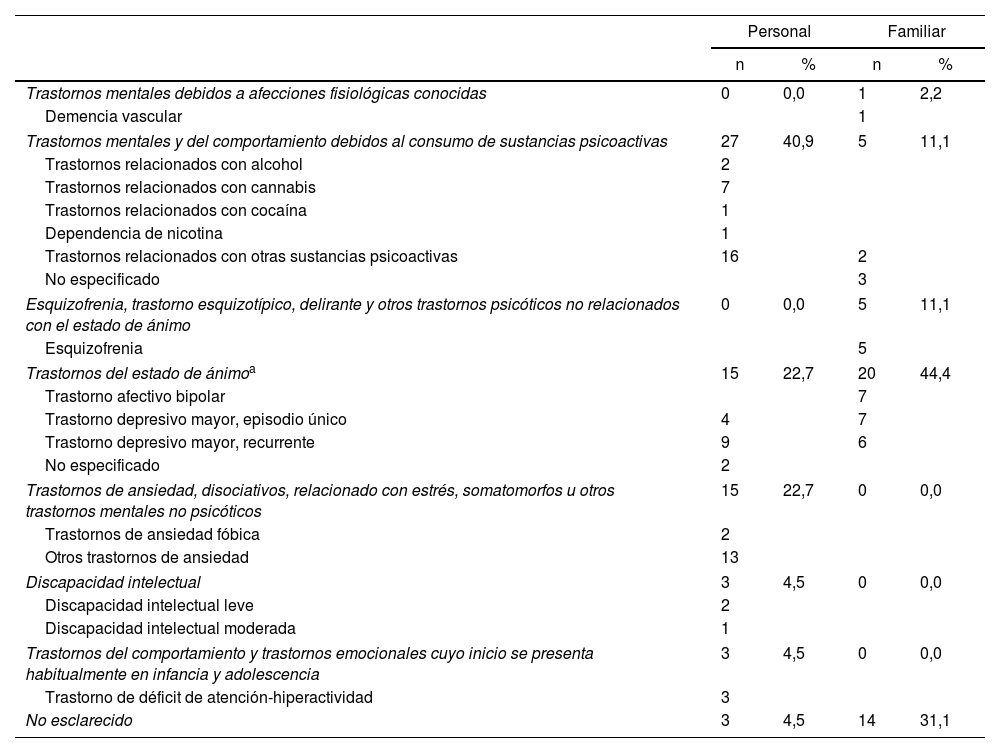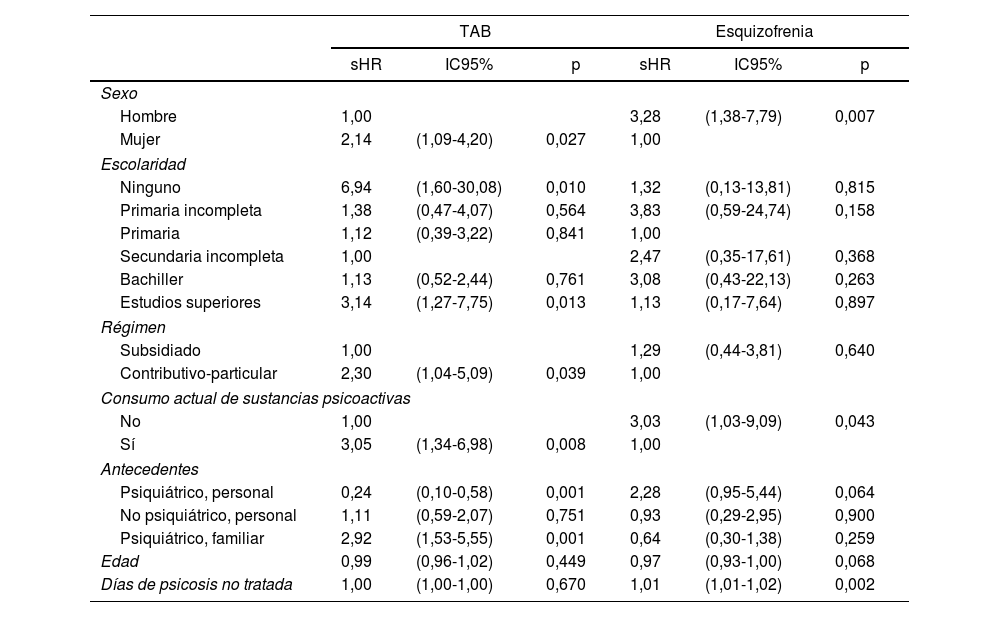Describir la trayectoria diagnóstica desde el primer episodio psicótico (PEP) hasta el diagnóstico de un trastorno psiquiátrico en adultos del Oriente antioqueño y explorar características asociadas.
MétodoEstudio retrospectivo de seguimiento a una cohorte basada en registros médicos. Se incluyeron pacientes adultos, del Oriente antioqueño, con diagnóstico de PEP según el criterio del psiquiatra, atendidos en un centro médico de tercer nivel (2007-marzo de 2022). El tiempo al diagnóstico psiquiátrico posterior al PEP fue la variable de desenlace. Los factores asociados a trastorno afectivo bipolar y esquizofrenia se analizaron mediante el modelo de supervivencia para eventos competitivos.
ResultadosSe incluyeron 137 pacientes, 40,9% mujeres, edad mediana de 36 años (RIQ=26). El 48,2% registró antecedentes psiquiátricos personales y el 32,8% familiares. Al año el 84,9% había recibido diagnóstico de trastorno psiquiátrico, trastorno afectivo bipolar en 39,8% y esquizofrenia en 24,7% de los casos. Trastorno afectivo bipolar fue la trayectoria diagnóstica más probable en pacientes: mujeres, con antecedentes psiquiátricos familiares y uso actual de sustancias psicoactivas. Esquizofrenia lo fue en pacientes: hombres, con antecedentes psiquiátricos personales y mayor cantidad de días de psicosis no tratada.
ConclusiónSe requieren rutas integrales de atención del PEP que reconozcan las particularidades de la epidemiología de los trastornos mentales en el Oriente antioqueño.
To describe the diagnostic trajectory from the first psychotic episode (FPE) to the diagnosis of a psychiatric disorder in adults from Eastern Antioquia and explore associated characteristics.
MethodA medical records-based retrospective follow-up study. Adult patients from Eastern Antioquia diagnosed with FPE according to the psychiatrist's criteria and treated at a tertiary care medical center (2007 to March 2022) were included. Time to psychiatric diagnosis after the FPE was the outcome variable. In addition, factors associated with bipolar affective disorder and schizophrenia were analyzed using the survival model for competitive events.
ResultsOne hundred and thirty-seven patients were included, 40.9% women, median age 36 years (IQR=26). 48.2% had personal psychiatric history, and 32.8% had a family history. At one year, 84.9% had received a diagnosis of psychiatric disorder, bipolar affective disorder in 39.8%, and schizophrenia in 24.7% of cases. Bipolar affective disorder was the most likely diagnostic trajectory in patients: women, with family psychiatric history and current use of psychoactive substances. Schizophrenia was in patients: men, with a personal psychiatric history, and with higher days of untreated psychosis.
ConclusionIntegrated healthcare routes for the FPE that recognize the particularities of the epidemiology of mental disorders in Eastern Antioquia are required.









